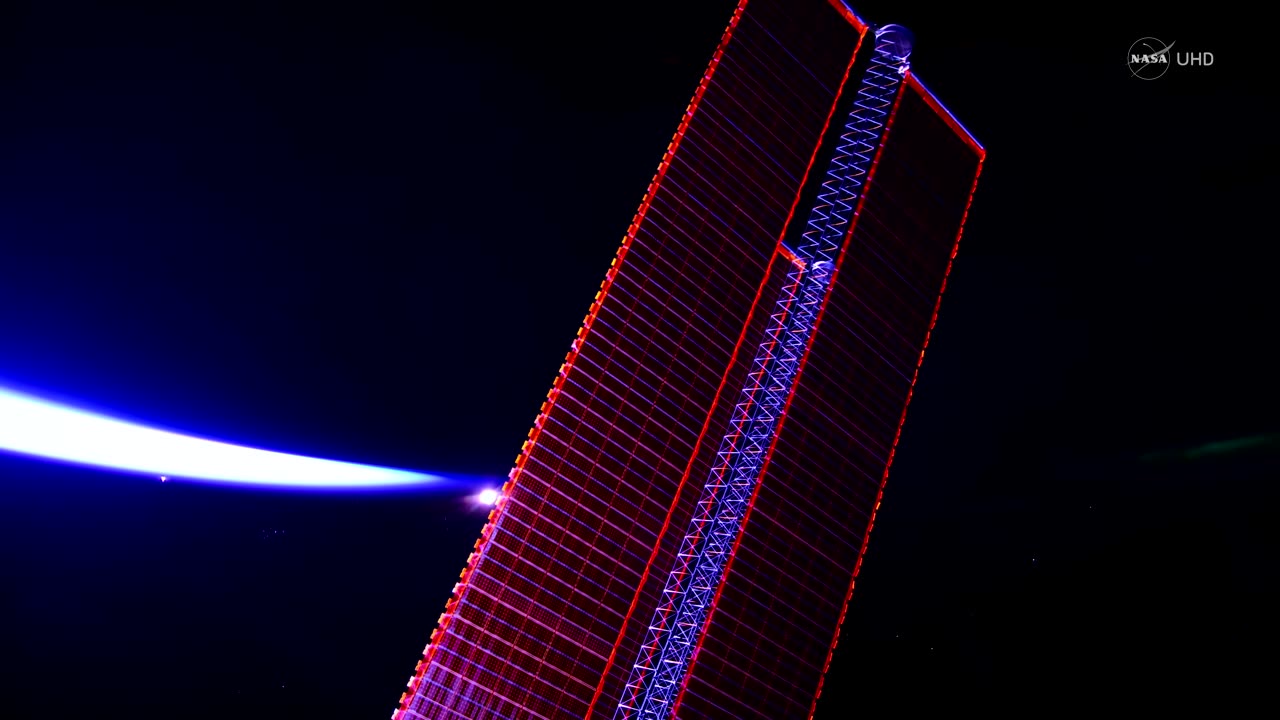Premium Only Content

Aurora Borealis from Space Northern Lights from International Space Station
The Aurora Borealis, also known as the Northern Lights, is a mesmerizing natural phenomenon that can be seen from space, particularly from the International Space Station (ISS). This breathtaking spectacle is the result of interactions between charged particles from the sun and the Earth's magnetic field.
When viewed from the ISS, the Northern Lights appear as vibrant curtains or ribbons of light that dance across the polar regions of the Earth. These curtains of light are typically green in color, but they can also display shades of pink, purple, and red. The colors are determined by the type of gas particles in the Earth's atmosphere and the altitude at which these interactions occur.
The source of this stunning display is the solar wind, a stream of charged particles, mainly electrons and protons, emitted by the sun. When these particles collide with the gases in Earth's upper atmosphere, such as oxygen and nitrogen, they become excited. As they return to their normal state, they release energy in the form of light, creating the vibrant hues of the Northern Lights.
The ISS offers a unique vantage point to observe this phenomenon because it orbits the Earth at an altitude of approximately 420 kilometers (260 miles). From this vantage point, astronauts aboard the ISS have an unobstructed view of the auroras as they shimmer and undulate across the polar regions. The view is particularly striking during the dark winter months when the Northern Lights are more frequent and vivid.
Capturing the Northern Lights from space is not only scientifically valuable but also visually stunning. It serves as a reminder of the incredible beauty and complexity of our planet and the wonders of the universe beyond. Astronauts aboard the ISS often share their awe-inspiring images and videos of the Northern Lights, providing a unique perspective on this natural wonder that can only be fully appreciated from space.
-
 38:32
38:32
The Why Files
21 days agoThe Real CIA Vol. 1: 693 Pages of Secret Crimes
87.7K59 -
 49:12
49:12
MattMorseTV
10 hours ago $1.27 earned🔴Zelenskyy is NOT HAPPY about Trump’s NEW DEAL.🔴
101K135 -
 1:03:49
1:03:49
Warren Smith - Secret Scholar Society
4 days ago"You are on the brink" - My Conversation with Nick Fuentes
69.7K61 -
 8:05
8:05
Tactical Advisor
11 hours agoNEW Best Budget AR15 | PSA Guardsman (FIRST LOOK)
68.1K26 -
 8:55
8:55
Warren Smith - Secret Scholar Society
3 days agoMatt Walsh EXPOSES a Leftist's Lie So Badly She Flees the Stage
59K32 -
 25:05
25:05
Digital Social Hour
10 hours ago $0.23 earnedScott Jennings: The Fight for Free Speech: Scott Jennings Speaks Out
48.5K13 -
 1:29:24
1:29:24
Steve-O's Wild Ride! Podcast
3 days ago $0.14 earnedDarby Allin Risked His Life And Career To Climb Mt Everest | Wild Ride #262
44.2K -
 49:33
49:33
Jeff Ahern
12 hours ago $0.58 earnedThe Sunday Show with Jeff Ahern
47.8K9 -
 25:51
25:51
DeVory Darkins
1 day ago $3.40 earnedNewsom dealt MAJOR LEGAL BLOW by Texas as Joy Reid tragically HUMILIATES herself
60.1K201 -
 13:27
13:27
Degenerate Jay
15 hours ago $5.87 earnedRed Dead Online - A Wild West Game That Deserved Better
54.5K5